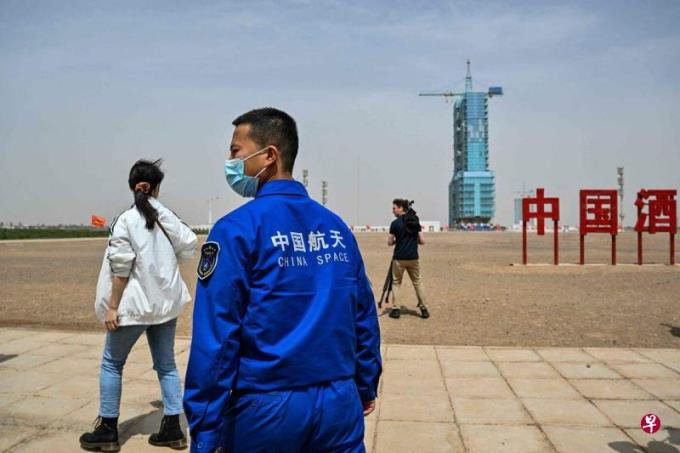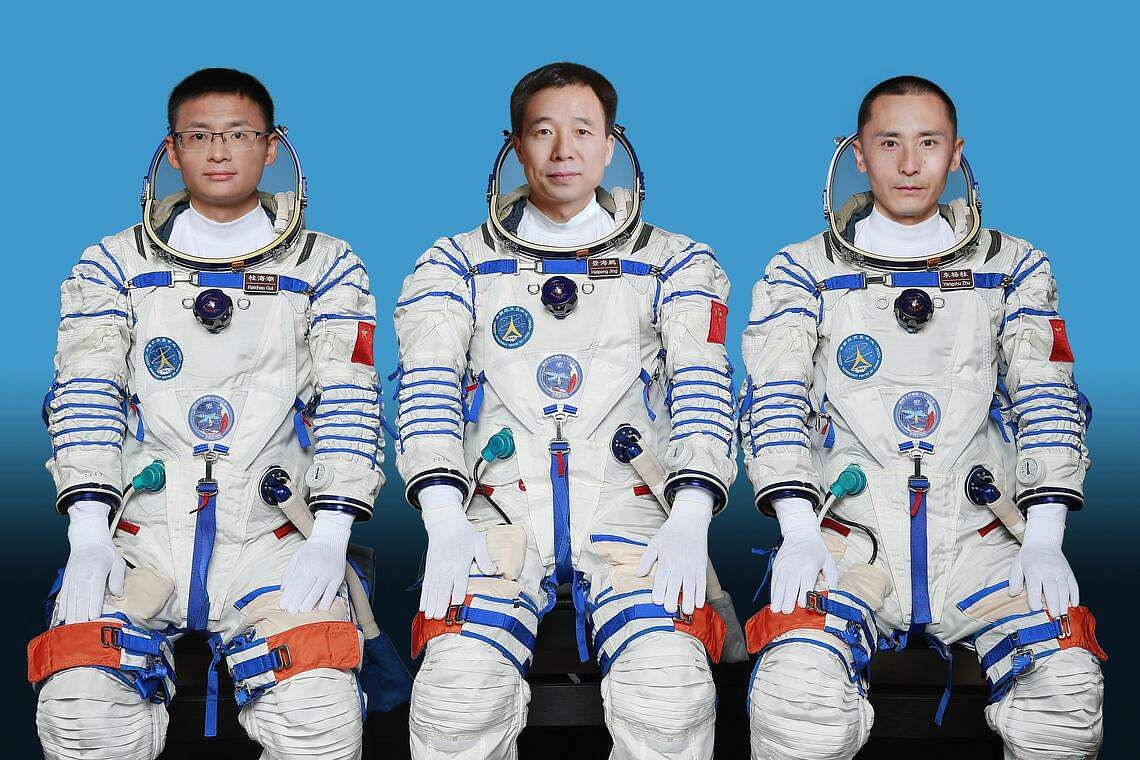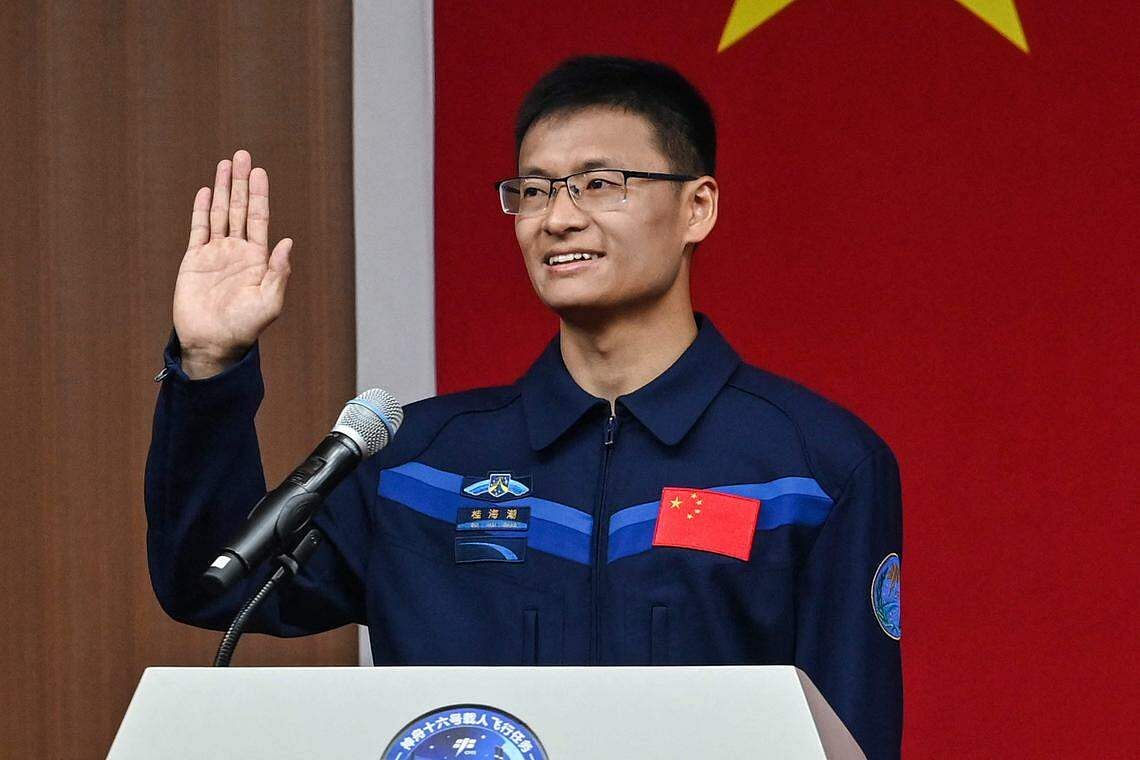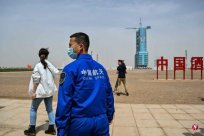
China officially announced the three astronauts of Shenzhou 16 manned aerospace mission. China is the first non -military origin, and the astronauts wearing glasses will board the China Space Station.
China Space Station's application and development phase of the flight task General Headquarters held a press conference on Monday (May 29) at the Jiuquan Satellite Launch Center, announcing that Shenzhou 16 will be on Tuesday (May 30) at 9:31 am in the morning (May 30)emission.
Chinese officials announced the first list of three astronauts of Shenzhou 16 at the press conference.And Gui Haichao.
Three astronauts held a meeting with hundreds of Chinese and foreign journalists through glass walls on the same day.They entered the venue in the applause of dozens of staff and waved to the media present. Gui Haichao, the first astronaut, was particularly watched by the media.
The 37 -year -old Gui Haichao broke the practice of Chinese astronauts who are generally born as soldiers.According to the official introduction, he is a professor of Beijing University of Aeronautics and Astronautics. He is mainly responsible for the tracking operation of the carbage load of space science. He has received professional training in science and aerospace engineering and has rich operating experience.
Gui Haichao said at the meeting: "In the past, the words of the astronauts were both sacred and far away for me. I once dreamed that one day I could move my love research work to space. 2018 When I learned that my country was going to choose the first batch of loaded experts, I did not hesitate to report the name. "
Shenzhou XIII multiplier is also the first type of aerospace driver, space flight engineer, and loading experts.This is the third batch of astronauts to perform flight missions. It is also the first time for the space flight engineer and carrier experts to perform flight missions.
Jing Haipeng is the fourth flight task, and he will be the most astronauts in China so far.

At present, civil and commercial aerospace has become a new track in the field of manned aerospace. Chinese military commentator Song Zhongping was analyzed during an interview with Lianhe Zaobao. Space tourism was also one of the focus of Chinese aerospace development.Gui Haichao served as a astronaut, showing that China's manned spacecraft gradually has a more humane design. It is not necessary to have a pilot's physique to enter space.
Shenzhou XIII is the first task after the official entered the application and development stage of China Space Station, marking the comprehensive transfer of the China Space Station to the normal operation mode.The Shenzhou 15 launched in November last year was the last manned spacecraft launched during the construction stage of the China Space Station.Shenzhou Sixteen will continue the rail transition mode for about half a year. Three new astronauts will take over the three Shenzhou 15th astronauts who return to the ground in June.
During the stopping, Shenzhou -16 Aerospace by the Astronauts will be connected with the visiting spacecraft of Shenzhou 17 manned spacecraft. It is planned to return to the Dongfeng landing field in November this year.
Lin Xiqiang, a spokesman for China -Manned Aerospace Engineering and Deputy Director of the Engineering Office, introduced that the task of Shenzhou XIII is to carry out space science and application loads on track.And perform tasks such as installation and maintenance and maintenance of space stations.
Harvard -Schimatsu Astronomy Center Celestial Physician Jonathan McDowell said in an interview with Lianhe Morning Post that Shenzhou 16 is a routine aerospace project with no major technical breakthrough.But this also shows that the Chinese space station project has entered a new stage, focusing on cumulative experience, not just seeking "first breakthrough."
Shenzhou XIII tasks and development answers
1) What are the physical requirements of Chinese astronauts?
According to Chinese official media reports, the height of Chinese astronauts must be unified between 1.60 meters and 1.72 meters.Essence
Yang Liwei, deputy chief designer of China Manned Aerospace Engineering, revealed in an interview in 2017 that the physical quality requirements of the third batch of astronauts are not strict in the physical quality of the second generation, but they must have more stable psychological tolerance.As well as the endurance of long -term high load in a small space, the inspection of chronic diseases is also stricter.It is difficult for those who have fractured or have a breast for surgery. It is generally difficult for myopia to choose, because entering the space load is large, and the retina is easy to fall off.
2) Why did the first astronauts in the Shenzhou XIII multiplied group appeared?

Gui Haichao broke the established impression of people's generally not wearing glasses. Huang Weifen, chief designer of the Chinese manned space engineering astronauts, was introduced during the interview with Lianhe Morning Post.The basic conditions and clinical conditions are different from general occupational astronauts.
The official relaxation of this type of non -professional astronauts has relaxed clinical requirements such as vision and physiological functions. During the few years when such astronauts have been trained and completed in the astronauts.solve.
3) Why does China focus on promoting aerospace development?
In 2011, the U.S. Congress used the Wolf clause that limited Sino -US space cooperation to prohibit the reception of Chinese official visitors from the United States Space Agency.Scientific research cooperation in the field of aerospace.This means that China cannot use the only international space station led by the United States at the time.
After 2011, China, which was rejected outside the door of the International Space Station, accelerated its independent innovation in the aerospace field.In 2013, Shenzhou 10 manned spacecraft successfully launched, and China completed the application of the first manned round -trip transportation system.In 2016, Tiangong No. 2 and Shenzhou 11 completed the manned flight mission. For the first time, China realized the 30 -day interim in the interim.At the end of 2022, China completed the track of the Tiangong Space Station, achieving the three -step target set in 1992, and officially entered the stage of application and development for more than 10 years.
4) Has Chinese aerospace technology reached the level of the United States?
China is currently a second space country.China has invested in space and rocket technology in the past ten years.The 21 -year aerospace budget is estimated to be 16.18 billion US dollars, less than one -third of the US budget.
After the U.S. -led international space station operating period expires in 2030, China Tiangong Space Station is likely to become the only space station in space.The Pentagon of the United States predicted last August that China will surpass the American space capabilities in 2045.



